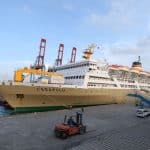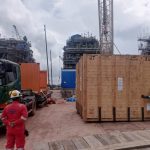Dear reader,
Welcome to Liga Asuransi, Risk Management and Insurance Specialist. Today, we investigate an urgent global issue with local significance—the increasing risk of climate change impacts in Indonesia. From rising sea levels to extreme weather events, these challenges threaten communities, businesses and economies. Understanding these risks is critical for effective mitigation and adaptation strategies.
If you found this article insightful, please share it with your friends. Also, explore hundreds of related articles on our blog to deepen your knowledge of risk management and insurance. Let’s navigate this challenge together!
Climate Change and the Indonesian Insurance Industry
Indonesia, an archipelagic country with more than 17,000 islands, is increasingly vulnerable to the negative impacts of climate change. Rising sea levels, increased rainfall, and prolonged drought are causing more frequent and severe natural disasters, including floods, landslides, and forest fires. These events not only threaten the country’s rich biodiversity but also pose significant risks to the economy and livelihoods of millions of people.
In this context, the insurance industry plays an important role in mitigating climate-related risks. By providing financial protection against natural disasters, insurance enables individuals, businesses and communities to recover more quickly and build resilience to future events. However, traditional insurance models often struggle to address the complexity and scale of climate-driven disasters. This has led to the emergence of innovative solutions, such as parametric insurance, which offers faster payouts based on pre-determined triggers, increasing the efficiency of disaster response.
This article explores the impacts of climate change on Indonesia, examines the challenges faced by the insurance sector, and highlights the potential for innovative insurance solutions in building a more resilient future.
Impact of Climate Change in Indonesia
Indonesia as an archipelagic country is increasingly vulnerable to the various impacts of climate change. The country faces an increasing frequency of natural disasters, including floods, droughts and storms. These events not only threaten lives and infrastructure but also have profound economic and social implications.
Sea level rise poses a significant threat to Indonesia’s vast coastal areas. Coastal communities experience increased flooding and erosion, leading to loss of fertile land and population displacement. This exacerbates existing challenges related to urban planning, housing and resource allocation.
The economic consequences are enormous. Agricultural productivity declines due to erratic weather patterns, affecting food security and livelihoods. Damage to infrastructure due to extreme weather events results in high repair costs and disrupts economic activities. Socially, vulnerable populations bear the brunt of these changes, facing health risks, reduced income opportunities, and displacement.
Addressing these challenges requires a multifaceted approach, including the development of innovative insurance solutions to reduce the financial risks associated with climate-related disasters. By understanding the specific impacts of climate change on Indonesia, stakeholders can better prepare and adapt to ensure resilience and sustainability.
Challenges for the Insurance Industry
The Indonesian insurance industry faces significant challenges in addressing climate-related risks. Traditional insurance models, insurance shortages in vulnerable communities, and financial pressures from increasing claims are key issues that need to be addressed.
Limitations of Traditional Insurance Models
Traditional indemnity-based insurance relies on historical data to assess risk and determine premiums. However, climate change has altered weather patterns, making past data less reliable for predicting future events. This uncertainty complicates risk assessment and pricing, leading to potential underestimation of exposure to climate-related disasters. Additionally, the lengthy claims process associated with traditional insurance can delay recovery efforts, exacerbating the impact on affected communities.
Under Insurance and Low Penetration Rate
Many vulnerable communities in Indonesia remain underinsured or have no insurance coverage at all. Factors contributing to low insurance penetration include limited awareness of insurance benefits, affordability issues, and cultural perceptions. For example, in Jakarta, the majority of residents live in flood-prone areas without adequate insurance coverage. This lack of coverage leaves individuals and businesses exposed to financial hardship following climate-induced disasters.
The increasing frequency and severity of climate-related events has led to a surge in insurance claims, placing financial pressure on insurance companies. Higher claims payouts can erode insurance companies’ capital reserves, potentially affecting their solvency. Additionally, the reinsurance market has responded by tightening requirements and raising premiums, further increasing costs for primary insurers. These financial pressures can result in higher premiums for policyholders and reduced availability of coverage in high-risk areas.
Overcoming these challenges requires innovative approaches, such as the development of parametric insurance products that offer faster payouts based on predetermined triggers. Additionally, increasing public awareness, increasing affordability, and leveraging technology for better risk assessment can help increase insurance penetration and resilience to climate-related risks in Indonesia.
Parametric Insurance
Parametric insurance is an innovative approach that overcomes the limitations of traditional indemnity insurance, especially in the context of climate-related risks.
Definition and Principles
Parametric insurance, also known as index-based insurance, provides payouts based on the occurrence of predetermined events that meet certain parameters, rather than assessing actual losses. For example, a policy might pay a fixed amount if rainfall falls below a certain threshold during a critical period. The model relies on objective data sources, such as satellite measurements or meteorological indices, to trigger payments, ensuring transparency and speed in the claims process.
Advantages Over Traditional Indemnity Insurance
Fast Payouts: Since payouts are triggered by objective data, funds can be disbursed quickly, aiding in speedy recovery.
- Reduced Administrative Costs: Eliminates the need for time-consuming loss assessments, reducing overhead.
- Enhanced Transparency: Clear parameters and triggers increase trust between insurers and policyholders.
- Scalability: Suitable for covering broad events affecting many policyholders simultaneously.
Global Examples and Relevance to Indonesia
Globally, parametric insurance has been used to protect coral reefs in regions such as Hawai’i, providing funds for rapid restoration after hurricane damage.
In Indonesia, the International Fund for Agricultural Development (IFAD) has explored parametric insurance to support small farmers. Using satellite-based weather data, this insurance product offers protection against events such as drought and excessive rainfall, providing timely financial support without the need for individual loss assessments.
Additionally, initiatives are underway to develop parametric insurance solutions for coastal fishermen in Indonesia, offering payouts when adverse weather conditions prevent fishing activities.
These examples underscore the potential of parametric insurance to increase resilience to climate-related risks in Indonesia, especially for vulnerable communities and sectors.
Case Study in Indonesia
Indonesia is embracing parametric insurance as a strategic tool to reduce the financial impact of climate-related events. Three important case studies illustrate its application in various sectors:
- Mitigation of Drought Risk in Central Java
Central Java, an important rice producing region, frequently experiences droughts that endanger agricultural productivity. To overcome this, a parametric insurance model was developed by utilizing indices such as the Standard Rainfall Index (SPI) and the Standard Rainfall Evapotranspiration Index (SPEI). This index, derived from more than five decades of historical climate data, allows for provincial-level payments when drought conditions meet predetermined thresholds. This approach offers timely financial support to farmers, facilitating faster recovery and increasing resilience to future droughts.
- Coral Reef Protection through Parametric Models
Indonesia’s coral reefs are critical for coastal protection, biodiversity and the livelihoods of millions of people. Recognizing their importance, the United Nations Development Program (UNDP), in collaboration with Swiss Re and local partners, is developing parametric insurance products to protect this ecosystem. This initiative focuses on areas such as the Gili Matra Islands, where communities rely heavily on tourism and coral reef-related fisheries. The insurance model triggers payments based on certain environmental parameters, such as storm intensity, enabling rapid funding for post-disaster reef restoration efforts.
- Supporting Small-Scale Fishermen in Facing Unpredictable Fishing Seasons
Small-scale fishers in Indonesia are increasingly affected by climate change, leading to unpredictable fishing seasons and reduced incomes. To support these communities, initiatives are underway to develop parametric insurance solutions that provide financial compensation when adverse weather conditions hinder fishing activities. By offering timely payments based on predetermined weather triggers, this insurance product aims to stabilize income and increase the resilience of fishing communities to climate variability.
This case study highlights the potential of parametric insurance to provide fast, transparent and effective financial protection against climate-related risks. By utilizing objective data and predetermined triggers, this insurance model can play an important role in increasing the resilience of vulnerable communities throughout Indonesia.
Future Prospects and Recommendations
To increase climate resilience in Indonesia, especially in high-risk areas, a multifaceted approach is essential.
Strategy to Increase Insurance Penetration in High Risk Areas
Digital Integration:
Utilizing digital platforms can simplify insurance products and expand reach. By integrating digital commerce with traditional channels, insurers can make products more accessible and user-friendly, thereby increasing penetration in underserved regions.
Product Innovation:
Developing customized insurance solutions that meet society’s specific needs can increase relevance and uptake. Moving from generic plans to tailored offerings ensures better alignment with local risks and preferences.
Financial Literacy Campaign:
Implementing educational initiatives to increase awareness about the benefits and mechanisms of insurance can empower communities to make informed decisions, thereby increasing participation rates.
Collaboration Between Insurance Companies, Government and Society
Synergistic partnerships between insurance companies, government agencies and local communities are essential. Such collaboration can facilitate the development of inclusive insurance frameworks, ensuring that policies are effective and culturally sensitive. Government support in the form of subsidies or incentives can further encourage adoption among vulnerable populations.
Investment in Data Collection and Risk Modeling
Accurate data and advanced risk modeling are the basis for designing effective insurance products. Investing in technology that provides real-time data on climate patterns and potential hazards allows insurers to assess risk more precisely, leading to fairer pricing and better coverage options.
Role of Insurance Brokers Like L&G Insurance Brokers
Insurance broker serves as a vital intermediary, bridging the gap between insurance companies and clients. They assist in identifying appropriate coverage, navigating policy options, and facilitating the claims process. Brokers like L&G Insurance Broker plays a critical role in increasing insurance literacy, building trust, and ensuring that clients receive customized solutions that meet their specific needs.
In conclusion, addressing climate-related risks in Indonesia requires a comprehensive strategy that combines technological innovation, collaborative efforts and insurance broker expertise to create a resilient community.
Conclusion
Climate change presents significant challenges for the Indonesian insurance industry, with increasing natural disasters and rising sea levels threatening society and the economy. Traditional insurance models often struggle to address these growing risks, highlighting the need for innovative solutions such as parametric insurance. By providing fast, data-driven payments based on predetermined triggers, parametric insurance offers a promising approach to increasing resilience, especially for vulnerable populations such as smallholder farmers and coastal communities.
To implement these solutions effectively, collaboration between insurance companies, government agencies and local communities is essential. Investing in accurate data collection and risk modeling will further enhance product design, ensuring that insurance offerings are relevant and accessible. Insurance brokers like L&G Insurance Brokers play a critical role in this ecosystem, bridging the gap between complex insurance products and clients’ unique needs.
As Indonesia continues to impact climate change, adopting innovative insurance mechanisms and encouraging collaborative efforts will be key to building a more resilient future.
Looking for insurance products? Don’t waste your time and contact us now
HOTLINE L&G 24 JAM: 0811-8507-773 (CALL – WHATSAPP – SMS)
Website: lngrisk.co.id
Email: oktoyar.meli@lngrisk.co.id
—















